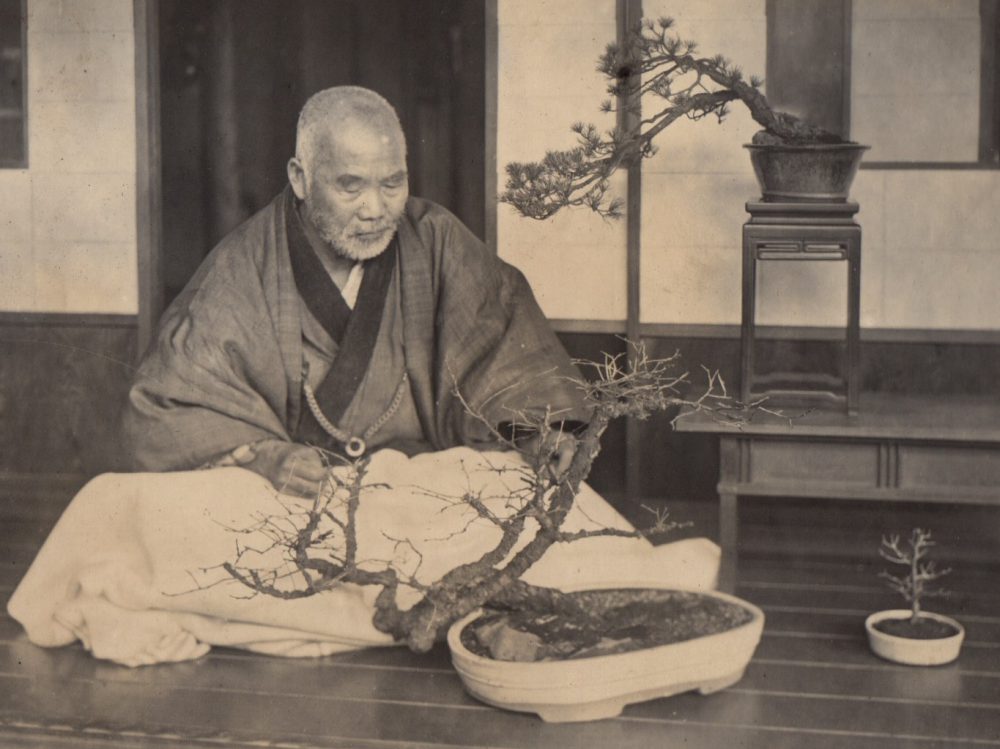There is a belief that growing miniature trees in pots began in ancient Egypt. It is also possible that the Hanging Gardens of Babylon could be considered the foundation of bonsai creation. However, the modern, classical bonsai is undoubtedly rooted in China. The exact date when miniature trees began being grown in pots is unknown. In China, the tomb of Prince Zhang Huai was discovered in 1972 (who passed away in 706). On the tomb's wall, there is a painting showing a servant holding a miniature landscape in a pot, with small stones and trees. This is the earliest surviving depiction of miniature trees grown in pots.

The rocky soil and harsh mountain climate do not allow plants to develop normally. Trees grown in such conditions typically do not grow large. Their trunks, branches, and roots are often strangely deformed. It is believed that in China, early miniature landscapes were created by collecting such trees and planting them in small pots.
After some time, the culture of creating miniature trees spread to Japan, presumably through examples brought by Buddhist monks and diplomats from China (7th-9th centuries). The oldest Japanese painting depicting a miniature tree in a pot dates back to the 12th century. Hachinoki – this term in Japan refers to miniature trees, dating back to the 14th century.
In the early 19th century (the exact time is unknown), specialists gathered in the Japanese city of Itami to develop methods for advancing the creation of miniature trees. They replaced all the earlier terms (used to refer to miniature trees grown in pots) with the word bonsai. However, this term struggled to gain widespread use for almost a century.

Utagawa Sadahide, 1861
After the reforms of 1866-1869 (the so-called Meiji Revolution, when Japan underwent significant political and social changes), the active development stage of bonsai began. By this time, Japan, after two centuries of complete isolation, had opened its borders to the rest of the world, which contributed to the spread of bonsai to other countries. In 1900, during the World Expo in Paris, Europe saw bonsai for the first time. Initially, the West did not receive bonsai well. However, gradually opinions changed, and by the late 1930s, it was regarded as one of the art movements.

As they say, after the end of World War II, there were cases where American soldiers returning home brought bonsai from Japan. However, due to a lack of proper care, these plants quickly deteriorated. The West needed quite some time to learn how to create bonsai, and if today bonsai is popular, it is primarily thanks to the Japanese living in the West.
There is a similar tradition of bonsai in Vietnam and Korea. Koreans believe that the tradition of miniature landscapes and trees spread from China to Korea first, and only then to Japan. As for China, the art of miniature trees and landscapes is currently called "Pinyin" (盆景, landscape in a pot) and "Penzai" (盆栽, plant in a pot), and it differs slightly from the Japanese classical bonsai. The term "bonsai" itself, as many researchers of bonsai history note, is the Japanese pronunciation of the Chinese term "penzai".
Currently, bonsai is widely spread around the world. Shops, educational schools, books, enthusiast clubs, countless websites on the internet that offer both educational content and commercial offers, a wealth of photographic material, tips on the materials needed for shaping, tools, and much more. In short, bonsai is becoming more and more popular every year.
Such popularity has a downside. The mass, commercial production of bonsai has created a large number of low-quality products. Bonsai can be found in supermarkets, plant shops, and even ordered online. As they say, taste is subjective, but in many cases, plants are sold that have not been created according to the traditional bonsai methods. Such miniature plants can only conditionally be called bonsai, based solely on their small size and the fact that they are grown in pots. Creating a true bonsai requires a significant amount of time and experience, which is why such specimens remain quite rare even today.

